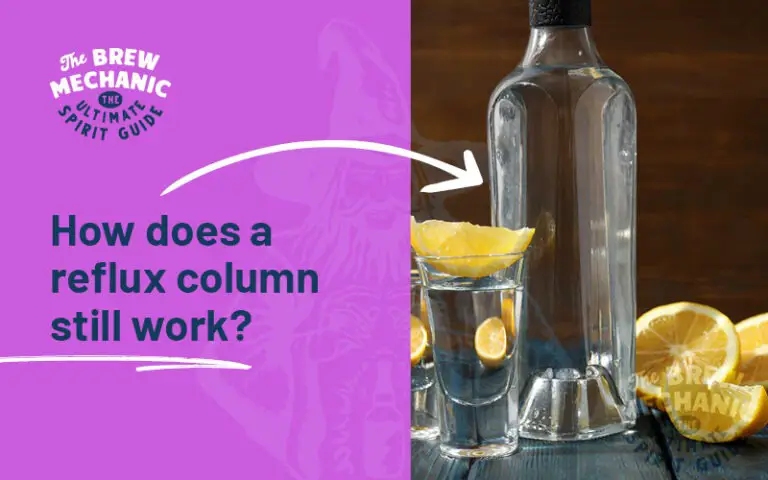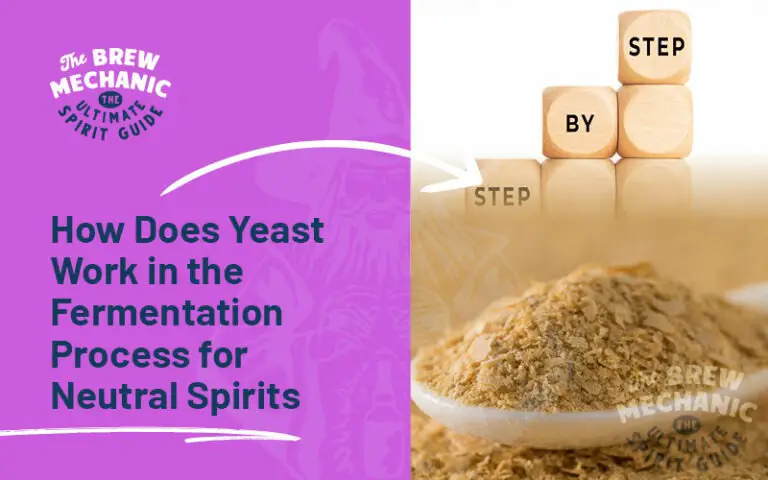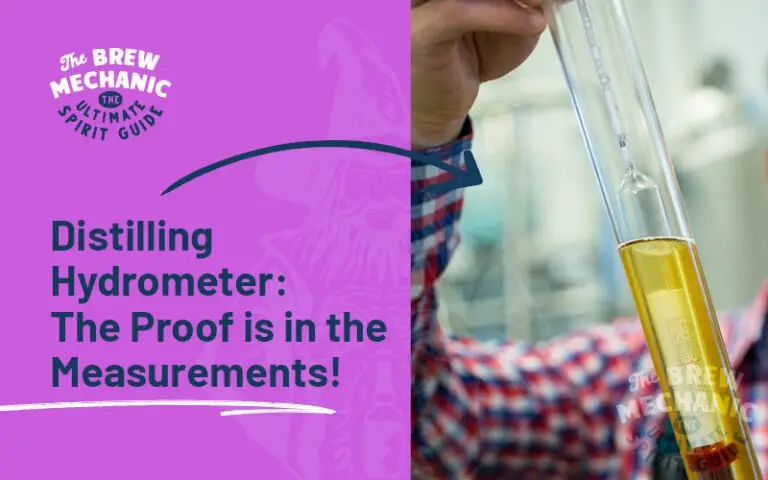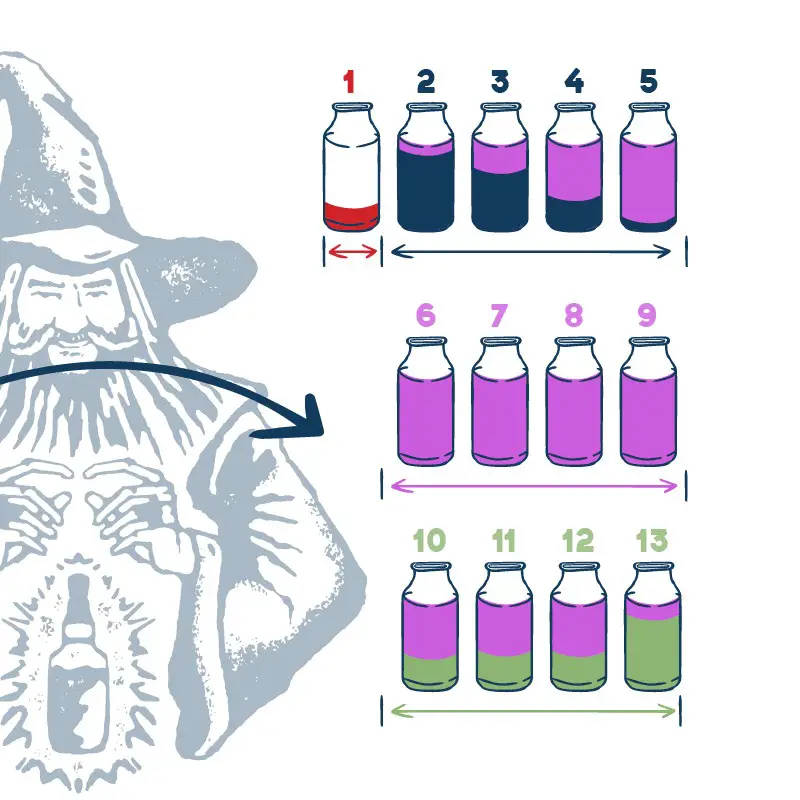Navigating Reflux Still Foreshots: A DIY Guide to Sugar Wash Distillation
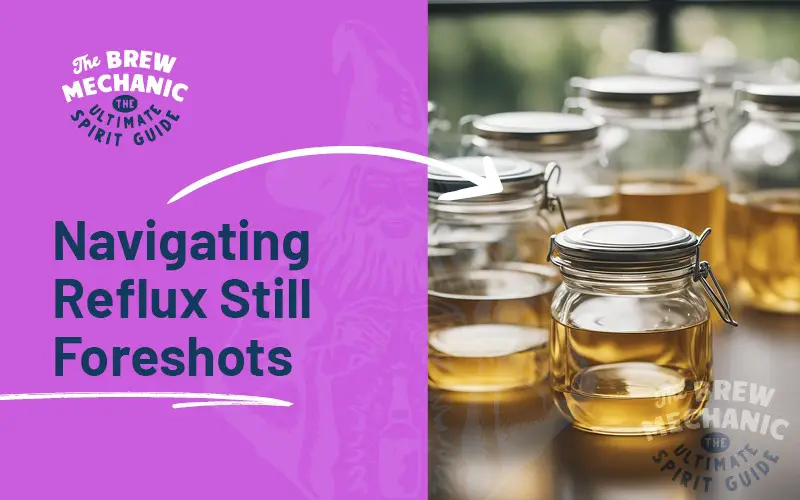
Well, a reflux still represents a significant advancement in the distilling world, enabling distillers to achieve higher alcohol concentrations and purer distillate which is amazing! But with that awesomeness comes the reflux still foreshots. Those ugly things.
Once we know how to separate the reflux still foreshots, this apparatus allows vapor to rise, condense, and fall back into the boiler multiple times, ensuring that only the purest vapor reaches the top. We make cuts and end result is a smoother, more refined spirit for collection.
Before we start, this boiling point chart is essential for you to understand.
| Acetone – Foreshots | 56.6°C or 133.8°F |
| Methanol- Foreshots | 64°C or 147.2°F |
| Ethyl Acetate – Heads | 77.1°C or 170.8°F |
| Ethanol Range – Hearts | 78.3 > 81.5°C or 172.9 > 178.7°F |
| 2 Proponal – Tails | 82°C or 179.6°F |
| 1 Proponal – Tails | 97°C or 206.6°F |
| Fuesel oils – Tails | 94 > 95°C or 201.2 > 203°F |
The Importance of Reflux Still Foreshots in Distilling
Alright, foreshots are the first portion of the distillate collected during a distillation run. They contain volatile compounds, including methanol, which can be harmful if consumed.
This part is what we don’t want in our final spirits. You can read more about the risks of using sugar wash here (which is none). It is way less volatile than mash in a pot still. It’s crucial for distillers to identify and discard the foreshots, ensuring the safety and quality of the final spirit.
Typically, the foreshots amount to about 50 ml to 150 ml per 5 gallons of wash. To identify the distilling foreshots read more here.
The Relationship Between Reflux Stills and Sugar Wash
Using a sugar wash with a reflux still is a popular choice for many DIY distillers. Sugar wash is pretty simple to prepare and ferments quickly (depending on the yeast), producing a clean, neutral spirit that’s perfect for vodka or as a base for other spirits.
The reflux still enhances the purity of the distillate from a sugar wash, ensuring a smoother finished product. To understand more about a sugar wash batch read here.
How to Properly Set Up Your Reflux Still
Setting up your reflux still properly is paramount to achieving optimal distillation results. Ensure that all components are securely connected, and pay close attention to the reflux column, packing, and condenser.
The reflux column should be filled with proper packing material to facilitate the reflux process, and the condenser must be adequately cooled to ensure the vapor condenses effectively. For more details about running your reflux still.
Identifying and Discarding Foreshots: A Crucial Step
Identifying the foreshots requires attention to smell and sometimes taste. The foreshots will have a sharp, unpleasant smell, and potentially a harsh taste.
It’s imperative to discard this initial fraction, as it contains harmful compounds. Typically, the foreshots constitute the first 50 ml to 150 ml of distillate per 5 gallons of wash roughly.
The boiling points are below to make sure you boil over the foreshot and separate the heads.
| Acetone – Foreshots | 56.6°C or 133.8°F |
| Methanol – Foreshots | 64°C or 147.2°F |
| Ethyl Acetate – Heads | 77.1°C or 170.8°F |
Refining Your Distillation: The Role of Cuts
Making precise cuts between the foreshots, heads, hearts, and tails is crucial in distilling. The heads follow the foreshots and contain undesirable compounds. Here at The Brew Mechanic, we rather be safe than sorry. So heads has to be boiled over and discarded as well. We don’t want this taste and smell in our final product.
The hearts hold the desired alcohol for us to be happy and collecting the alcohol safely.
The tails come last, containing heavier alcohols and flavors. Using a reflux still helps in making cleaner, more defined cuts, resulting in a superior spirit.
| Acetone – Foreshots | 56.6°C or 133.8°F |
| Methanol- Foreshots | 64°C or 147.2°F |
| Ethyl Acetate – Heads | 77.1°C or 170.8°F |
| Ethanol Range – Hearts | 78.3 > 81.5°C or 172.9 > 178.7°F |
| 2 Proponal – Tails | 82°C or 179.6°F |
| 1 Proponal – Tails | 97°C or 206.6°F |
| Fuesel oils – Tails | 94 > 95°C or 201.2 > 203°F |
Maximizing Purity: The Benefits of Using a Reflux Still
The main benefits are purity and alcohol concentration. The reflux process ensures that impurities are stripped away, leaving behind a cleaner, higher-proof alcohol. This is especially beneficial when distilling a sugar wash, as it helps produce a neutral spirit, free from unwanted flavors and impurities.
Tips and Tricks for Successful Sugar Wash Distilling
To ensure a successful sugar wash distilling experience, start with a quality sugar wash, monitor the fermentation process closely, and maintain a steady temperature during distillation. Additionally, be patient and allow sufficient time for the reflux process to work its magic, and be vigilant in making precise cuts to separate the foreshots/heads, hearts, and tails.
We personally love the sugar wash when removing reflux still foreshots as it is the safest option for a beginner.
Ensuring Safety and Quality in Your DIY Distilling Adventure
Safety should always be a top priority in distilling as all know the dangers. Ensure that your equipment is in good condition, be meticulous in discarding the foreshots, and adhere to proper distillation practices. Also, a big one is making sure the equipment is clean and sanitized. Don’t drop the ball on this part.
By doing so, you can enjoy the rewards of producing high-quality spirits safely in the comfort of your own home.
What should I do now?
Let’s take action! Reflux stills are your secret weapon for top-notch alcohol purity, turning every batch into an epic spirit. Toss out the reflux still foreshots like rotten eggs, a non-negotiable step for a tipple that’s safe and sound.
Sugar wash and reflux stills? A match made in smooth-spirit heaven, perfect for homegrown distillers. And remember, precision is your best friend; making those cuts cleaner than a comedian’s best joke.
But keep your eyes on the prize, safety is the name of the game as we want you to be safe. Embrace the knowledge, practice diligently, and soon you’ll be crafting spirits like a pro!
Download our Cuts Chart here
Yes I want this epic PDF plus get tips and tricks! You will be joining our distilling mail list. 🙂
Last Updated on Nov 7, 2023 by The Brew Mechanic
Disclosure: I may receive affiliate compensation for some of the links below at no cost to you if you decide to purchase a product or service. You can read our affiliate disclosure in our privacy policy. The information provided is for entertainment only.

With 35 years of knowledge of being a chemical engineer in alcohol manufacturing plants, my mission is to teach the next generation of home distilling alcohol brewers at a supernatural speed.
My reviews are based on real-life experiences with reflux stills, sugar wash, troubleshooting and mystical chemical reactions.

